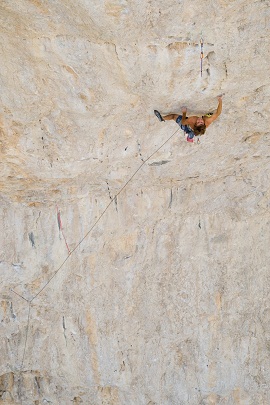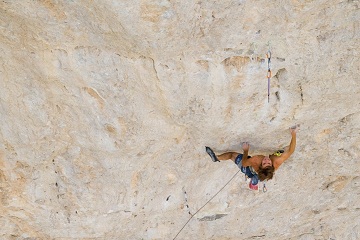
Photo Courtesy of Big UP
WHAT’S LEFT TO ASK Chris Sharma? The question gnaws at me. The night before our interview, I lie in bed and stare at the ceiling, wondering what I should talk about. The blond-haired Californian with the Indian last name has been at the forefront of climbing since he was 14 years old; since then, he’s lived a thoroughly public life. With first ascents of 5.15b routes and V15 boulder problems on his resume, Sharma has practically been installed in most major climbing magazines for more than a decade, and has been the subject of dozens of climbing films. After all that time, is there anything left to discuss?
